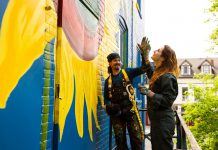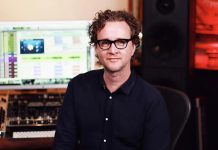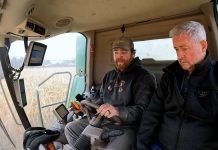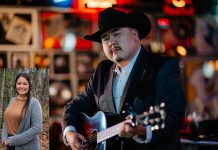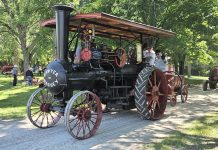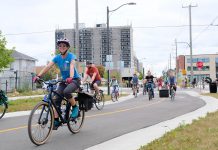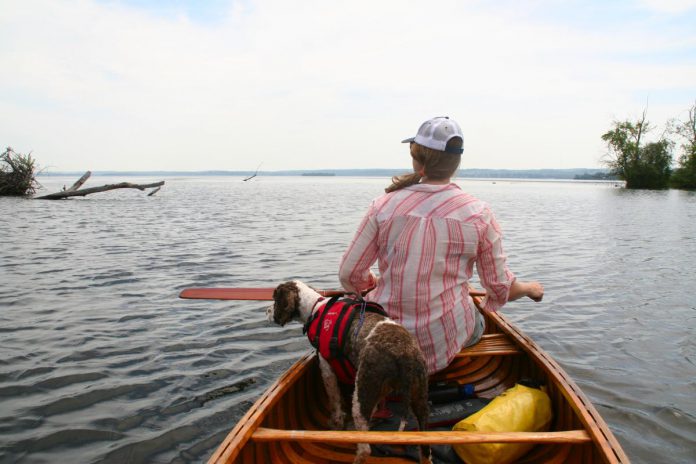
GreenUP encourages people to connect with nature and appreciate the health and history of local watersheds. This guest-authored story is the third in a series about a group of 16 friends from Peterborough who decided to paddle the Trent-Severn Waterway from the Odenaabe (Otonabee) River in the south end of Nogojiwanong (Peterborough) to the Bay of Quinte. One of the inspirations behind the trip was to connect with the watershed, its history, and the traditional migration of the Atlantic salmon along this route.
The route of this trip and the group’s intention to grow a stronger sense of connection to the waterway was outlined in the first story in May. The second story, published in early June, shared stories about the plants and animals who were part of the journey, as well as travel tips so anyone looking to connect to the river could find the information they needed. This final installment of the series offers a reflection on how the trip developed one paddler’s identity as a Treaty person in Canada and invites readers to question their own relationship with the land.
Stroke … jay … pitterpatter. Stroke … jay … pitterpatter.
The song of the paddle. The shape of a canoe.
Cottages. Backcountry. Outdoor adventure.
These are icons of a Canadian identity, for some.
For those who inherit privilege and access to land.
This was me — a kid raised happily at cottages and summer camps in Ontario.
Every summer for 20 years I paddled the vast, porous expanse between Lake Superior and the Laurentians. I ventured far and wide to seek “adventure,” having been taught that “nature is a playground” and that the “world was mine to discover.” Yet I’d never followed the river that runs through my neighbourhood.
I have packed countless barrels with food prepared for trips in the “wild.” Yet I did not know what I could forage to make tea or a snack.
I have tripped with hundreds of people over the years. Yet they mostly all looked and spoke like me.
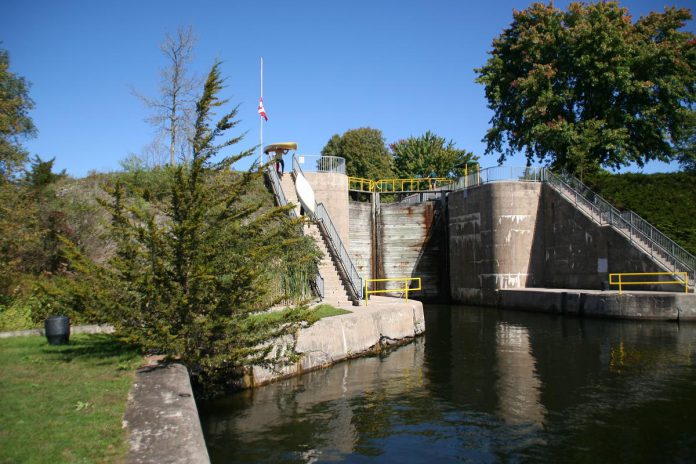
‘Time to disrupt these colonial concepts of canoeing,’ I thought, as I found other friends interested in paddling the watershed we live in. Time to commit to this territory, to the land and community that feed me. Time to give back to Odenaabe with my attention and care.
With the cedar strips of my grandfather’s canoe beneath my feet and the strength of my father’s ash paddle in my hands, I set out in the familiar setting of the stern of a canoe, listening for whatever came up along the way.
Paddling out the Odenaabe, where she opens up into Rice Lake and rounds the corner towards the Indian River, was particularly striking. I couldn’t believe how beautiful the mouth of the Odenaabe is. In the gorgeous smattering of little islands, I could sense the offering to birds on a long migration journey, the haven for nesting grounds and shady pools for the long swim upriver. A quiet curve of river with a seemingly untold story.
Coming to know the waters around Keene was unexpectedly meaningful to me, knowing that my father’s ancestors settled there in the 1840s. I come from two long lines of colonial descent (Dutch and British) and I know each of these peoples have had destructive and untrustworthy relationships with the land and Indigenous peoples of this place.
Yet the stories of my family’s relationship to this territory are not known. Thankfully, paddling as a community on behalf of the watershed created lots of space to be conscious about the land, its history, and the original peoples who are a reflection of that land.
As we paddled along Rice Lake’s shore, we passed Hiawatha First Nation, waterfront properties, and then Keene. My mind wandered to imagine early settler years.
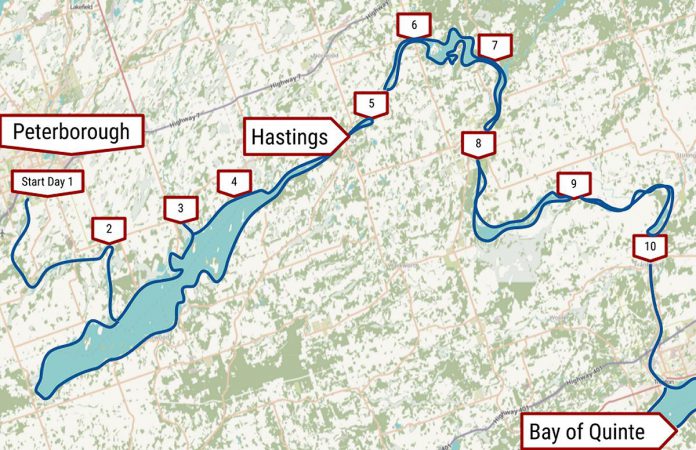
What did the river look like at that time? Were my ancestors involved in the channelization and construction of the Trent-Severn Waterway? Did they help build the roads and designate property lines that separated Anishinaabeg people from their lands? Or were they stealth allies, who disagreed with the rapid lumber extraction that took place in that era?
Spending time in the Odenaabe watershed, instead of heading out for another “wilderness adventure,” allowed for a glimpse of a connection to these people from which I came, a glimpse into what it means to live rooted in place.
While I am not indigenous to this place, I am indigenous to somewhere across the sea, and having a connection to this watershed refuelled curiosity about my own ancestral land-based culture.
Since then, learning more about my family’s relationship to this watershed has filled gaps in my colonial history and helped me own my “truth” more fully as a treaty person working towards Truth and Reconciliation.
There was another, more visceral, truth that we reflected on during this trip. Flags were flown at half-mast last summer, recognizing the confirmation of unmarked graves at Indian Residential Schools across the country.
These flags were constant reminders to reconsider our Canadian identities and relations with Indigenous peoples. Our group had several conversations about this within the healing containers of the canoes.
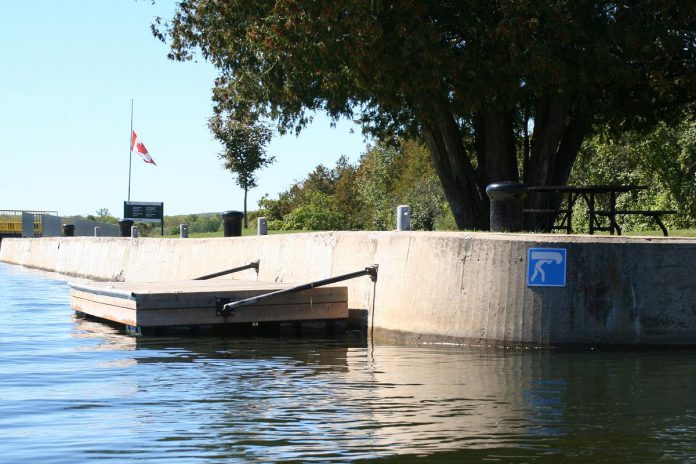
For me, it meant acknowledging that my childhood entitled me to canoe trip across Ontario through an Indigenous mode of transportation, when thousands of Indigenous children were robbed of that experience and connection to their land.
This difference in access to land is the most potent colonial privilege I’ve felt, and an aspect of Canadian identity I’ll always grapple with. Yet it’s a truth of Canada’s canoeing identity we need to face.
We all have our own stories and histories as people who live in this country we call Canada. Part of celebrating Canada is questioning our relationships with these lands and waters, as well as how we have been taught to think about our privileged access to them.


